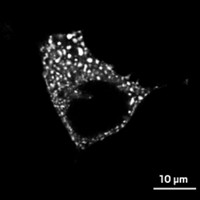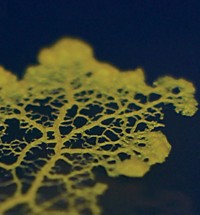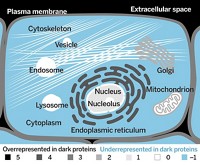Advertisement
Grab your lab coat. Let's get started
Welcome!
Welcome!
Create an account below to get 6 C&EN articles per month, receive newsletters and more - all free.
It seems this is your first time logging in online. Please enter the following information to continue.
As an ACS member you automatically get access to this site. All we need is few more details to create your reading experience.
Not you? Sign in with a different account.
Not you? Sign in with a different account.
ERROR 1
ERROR 1
ERROR 2
ERROR 2
ERROR 2
ERROR 2
ERROR 2
Password and Confirm password must match.
If you have an ACS member number, please enter it here so we can link this account to your membership. (optional)
ERROR 2
ACS values your privacy. By submitting your information, you are gaining access to C&EN and subscribing to our weekly newsletter. We use the information you provide to make your reading experience better, and we will never sell your data to third party members.
Biological Chemistry
Why Are Cells The Size They Are? Gravity May Be A Factor
Cell Biology: Bigger cells such as frog eggs have evolved a protein mesh to keep insides from settling to the bottom
by Carmen Drahl
September 23, 2013
| A version of this story appeared in
Volume 91, Issue 38

Eukaryotic cells, which are defined by having a nucleus, rarely grow larger than 10 μm in diameter. Scientists know a few reasons why this is so. For example, cells with a larger volume have a harder time obtaining nutrients from their surroundings. A new study suggests another reason—gravity (Nat. Cell Biol. 2013, DOI: 10.1038/ncb2830).
Scientists had thought gravity’s effects at the cellular scale were negligible. Yet Princeton University researchers Marina Feric and Clifford P. Brangwynne observed gravity at work in egg cells from the African clawed frog Xenopus laevis. The frog eggs can reach up to 1 mm across, and they are commonly used in research. The duo made the surprising discovery in a seemingly unrelated experiment studying why organelles seem held in place within frog egg nuclei.
They injected microscale polymer beads into the eggs and tracked their motion. Small beads easily diffused throughout the nucleus, but larger ones were trapped, suggesting an elastic meshwork constrains things. They suspected the mesh contained the protein actin, known for its structural role in the cytoplasm but whose role in the nucleus is unclear. When the team treated the eggs with drugs that disrupt actin, the organelles in the nucleus not only diffused freely but settled to the bottom of the nucleus within a few minutes—clear evidence of the effect of gravity.
“We hadn’t thought about gravity at all,” Brangwynne says. “We were just doing our thing, but when we destabilized this actin network it became apparent gravity was at play.”
Calculations based on the motion of the microbeads and the organelles showed that gravity starts becoming important around the 10-μm scale.
The researchers put forth an intriguing possibility: “Cells are typically no greater than ~10 μm, because beyond this size gravity is increasingly disruptive and additional stabilization mechanisms become necessary,” according to their paper.
“This is a very important finding,” says František Baluška of the University of Bonn, in Germany, who has studied the cytoskeleton in plants and its role in responding to gravity. “Gravity is a very weak force, and it is still enigmatic how gravity is perceived by living organisms.”





Join the conversation
Contact the reporter
Submit a Letter to the Editor for publication
Engage with us on Twitter